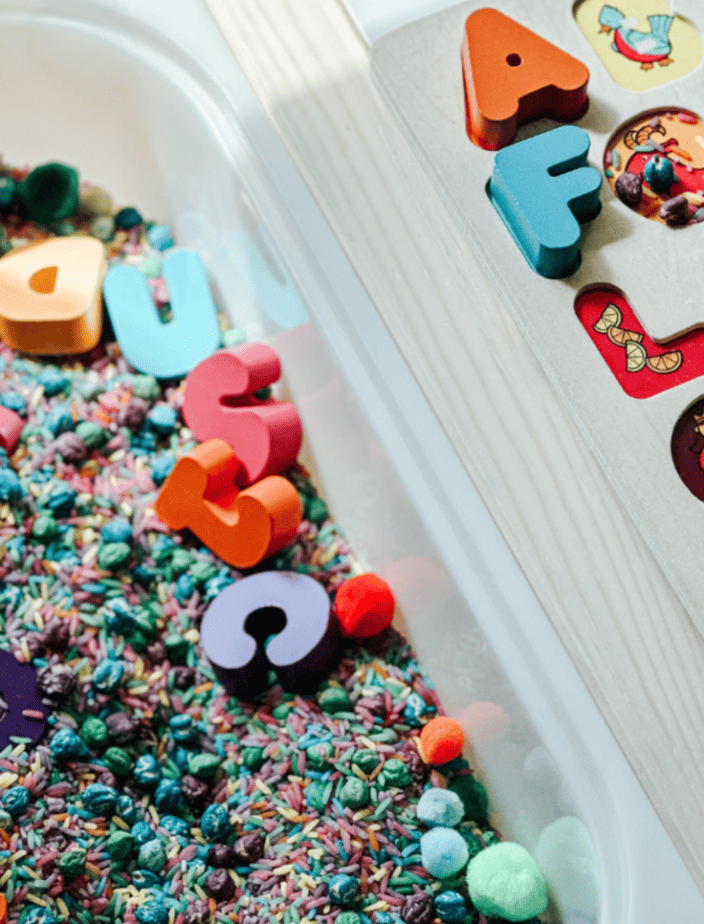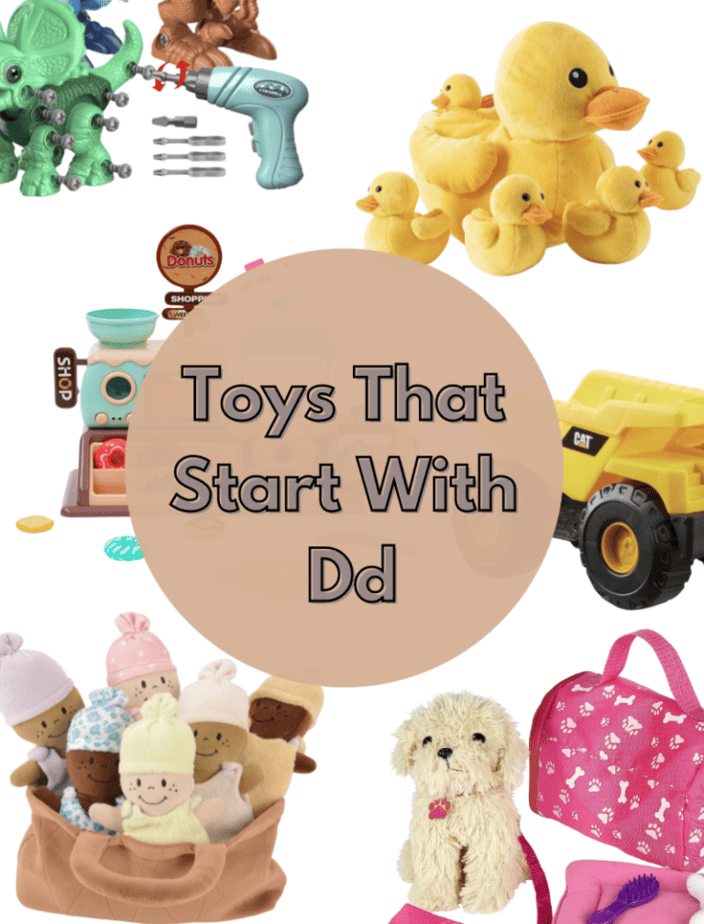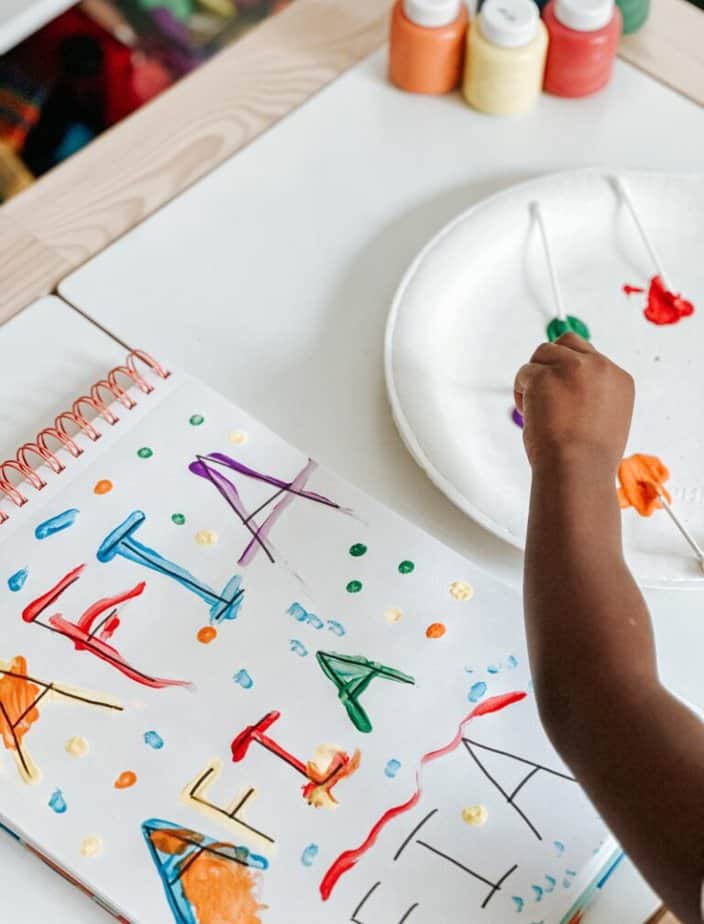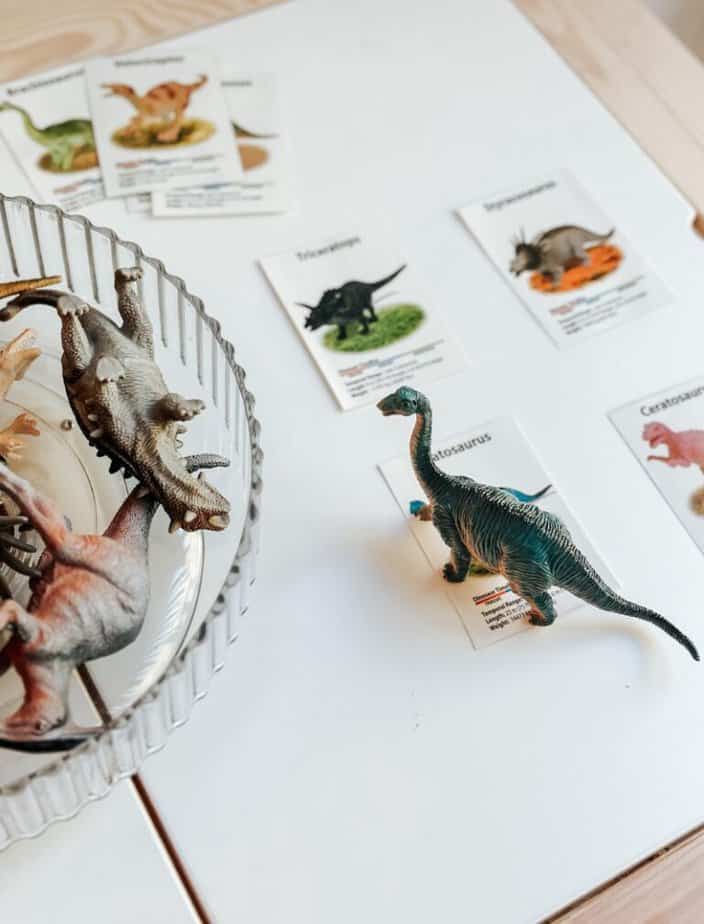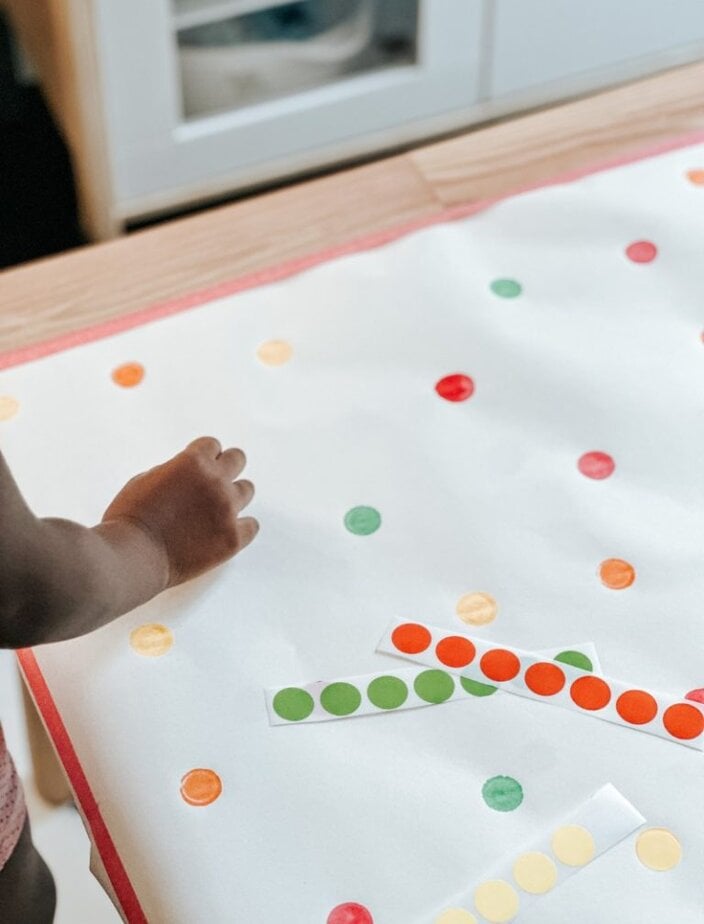Fun Flower Counting Activity For Toddlers

If you have a toddler or preschooler showing interest in numbers, or counting they will love this fun flower-counting activity. This activity is perfect for the summer, and helps develop one-to-one correspondence in math for your children! Here is a fun flower counting activity for toddlers!

Affiliate Disclaimer: This post may contain affiliate links, which means I receive a small commission if you purchase through my links at no additional cost!
Other Posts You May Like:
- Best Counting Activities For Toddlers
- Simple Bean Sorting Activity For Toddlers
- Summer Activities For Toddlers
Supplies Needed For Activity:
- Flower Petal FREE Printable – See Below
- Beads
- Pipe Cleaners
- Whole Puncher
- Laminator

FREE FLOWER COUNTING DOWNLOAD
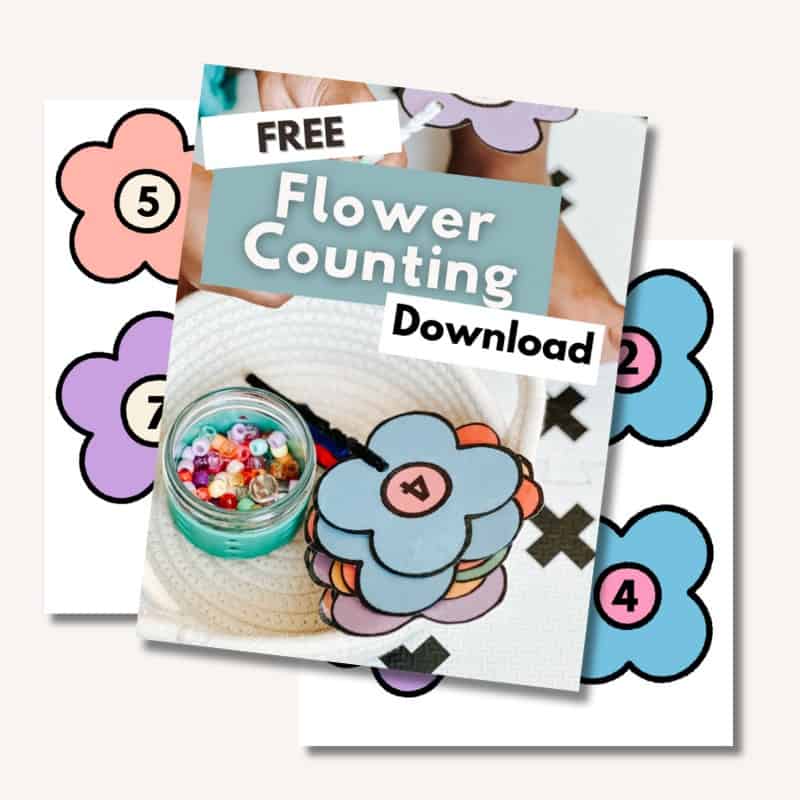
FREE Flower Counting Printable!
Grab this freebie, and have fun with this simple flower-counting activity for toddlers and preschoolers!
How To Set It Up:
- Gather Materials: You will need colorful beads, pipe cleaners, and numbered flower printable (like the ones shown in the image).
- Prepare the Flowers: Cut out flower shapes from printable. You can laminate them for durability.
- Set Up the Pipe Cleaners: Thread a pipe cleaner through each flower’s center hole. Ensure each flower has its pipe cleaner.
- Organize the Beads: Place a variety of colorful beads in a small container for easy access.
- Activity Instructions: Encourage the child to match the number on the flower with the corresponding number of beads. For example, if the flower has the number 5, the child should thread five beads onto the pipe cleaner attached to that flower.
- Practice and Play: Allow the child to count aloud as they add each bead, reinforcing their counting skills and number recognition.
This activity not only helps with counting but also enhances fine motor skills and hand-eye coordination as children thread the beads onto the pipe cleaners.
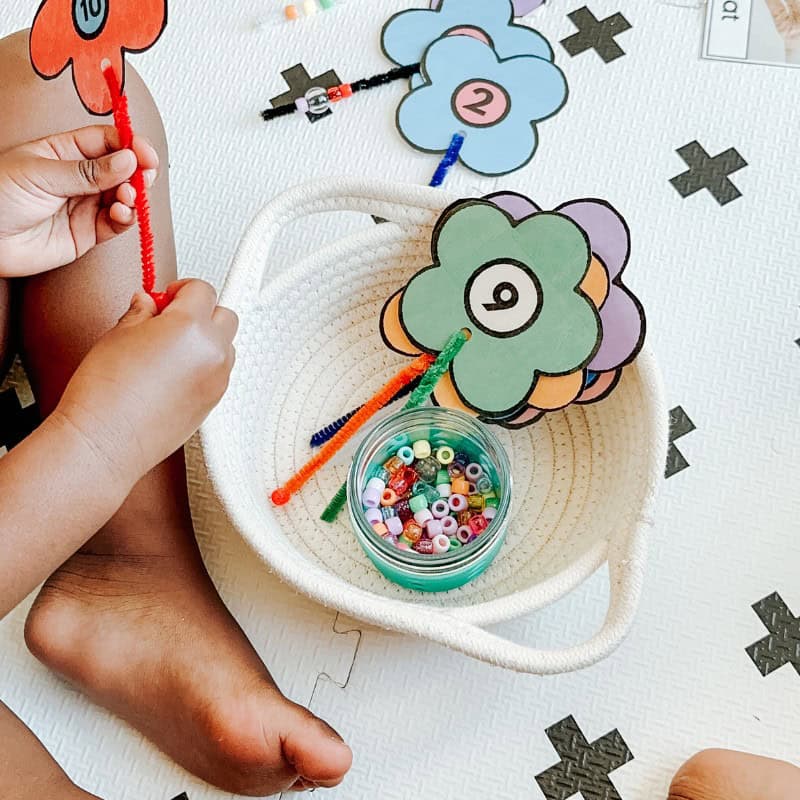
What Age Is This Activity Best For?
This activity is best for preschoolers aged 3+. This activity does call for small beads, so you want to be sure that your preschooler is older than 3, and can be supervised very closely while doing this activity.
When we finished this activity, I like to remove the beads and put them up until we are ready to use them again.
What Age Should You Introduce Counting Activities?
The best time to introduce counting activities to small children is typically around the age of two.
At this age, children are naturally curious and eager to explore the world around them. Introducing counting activities early capitalizes on their innate curiosity and ability to absorb new information quickly. Simple counting games, songs, and everyday activities like counting toys or steps can be seamlessly integrated into their daily routines, making learning both fun and intuitive. Early exposure to counting helps build a strong foundation for future mathematical skills and cognitive development, fostering a positive attitude toward learning from a young age.

What Are The Benefits Of This Activity?
- Fine Motor Practice
- Eye, Hand Coordination
- One to One Correspondence
- Number Recognition
Why Are Counting Activities Important?
Counting activities are important for small children because they lay the foundation for mathematical understanding and cognitive development. Engaging in counting helps young children develop number sense, which is the ability to understand and work with numbers. This foundational skill is crucial for future success in more complex math concepts.
Counting activities also enhance fine motor skills and hand-eye coordination, especially when children use manipulatives like beads in this counting activity or manipulatives. These activities require precise movements and attention to detail, fostering physical dexterity alongside numerical comprehension.
Furthermore, counting exercises promote language development. As children learn to count, they also learn the names of numbers and how to sequence them correctly, expanding their vocabulary and understanding of numerical order. This dual development of language and math skills is critical for overall academic achievement.
Counting activities also encourages problem-solving and critical thinking. Children learn to recognize patterns, make predictions, and understand cause-and-effect relationships. These cognitive skills are transferable to other areas of learning and everyday life.
Lastly, counting activities can be fun and engaging, fostering a positive attitude towards learning. They can be incorporated into games, songs, and daily routines, making learning enjoyable and seamless. This positive experience with math early on can lead to a lifelong interest in the subject.
